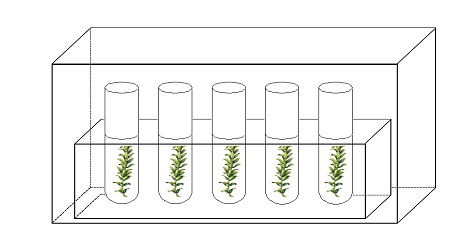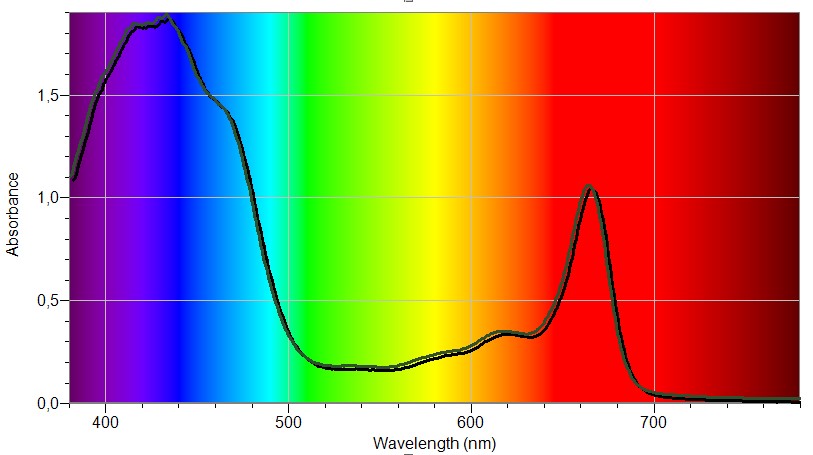The purpose of the Activity is to examine the influence of the colour of light on the photosynthesis performance. Students design the Activity by themselves. For technical reasons, it is advisable to use water plants. Houseplants can be used if oxygen or carbon dioxide sensors and data logging devices are available.
Engaging questions:
- What is the mechanism of plant nutrition?
- What is necessary for plants to live?
- Why are leaves of most plants green?
- Why do most plants turn yellow when there is no access of light?
- Why are some algae that live deep under water brown rather than green?
- In what way can we prove the occurrence of the photosynthesis process? Consider the problem theoretically for water plants – what is a reactant and what is a product of this process, how should the pH of the environment and the water level be changed?
- Which water is the best for this Activity : distilled water, mineral still water, mineral sparkling water?
Equipment:
- 5 boxes (may be shoe boxes),
- 25 test-tubes,,
- 3 pieces of LED strip (1. Illuminating red colour, 2. Illuminating blue colour, 3. Illuminating green colour,). LED strip can be bought in most of building materials supermarkets. They are sold by the meter, for the Activity it is enough to buy 0,5 m of the strip of each colour. (http://www.amazon.co.uk/WHITE-FLEXIBLE-STRIP-LIGHT-ADAPTER/dp/B003M7YQXK/ref=sr_1_3?ie=UTF8&qid=1323769498&sr=8-3)
- Canadian waterweed (Elodea canadensis Michx.) – 25 pieces of about 5 cm.
An sample description of the Activity :
Install the LED strip of different colours (red, green, blue, white) in the four cardboard boxes. For powering the strip, one power supply of 12 V should be enough. Prepare five sets of test-tubes with the Canadian waterweed (Fig. IV.1). The length of the plant should be similar (preferably the same) in all test-tubes. Pour the same amount of water into the test-tubes and mark its level with a pen. Plug the test-tubes with stoppers or with the use of parafilm. Put the set of test-tubes in the prepared lightning boxes. The 5th set, put into the box with no lightning. Leave the Activity for few days. The photosynthesis performance may be indicated by the number of oxygen bubbles on the walls of the test-tubes.
Alternatively, instead of the LED lightning, the filters of different colours installed in the boxes may be used. As a light source, the lamp with a bulb or a daylight may be used.

Figure IV.1. A sample diagram of the construction of one out of the five sets.
Discussion:
- What types of measurements can be used to determine the photosynthesis performance besides counting of the gas bubbles formed?
- In what light does the photosynthesis occur and why? In what light is it the most effective?
- In what light do the green plant grow the best?
- At Figure IV.2, an absorption spectrum of the plant pigment from the Canadian waterweed is presented. Does it agree with the results of the performed Activity ?
- Some algae have red leaves. Consider whether the results of the Activity with the use of these plants would be the same? Give reasons for your answer.
- What is the difference between the Activity with the use of the LED lighting and the Activity with the use of filters of different colours? Should the results be the same? Justify your answer (the Figure IV.2 may be useful).
- Is the illumination of the control set with the daylight and with the bulb light leading to different results?

Figure IV.2. Visible absorption spectrum of chlorophyll from the Canadian waterweed.